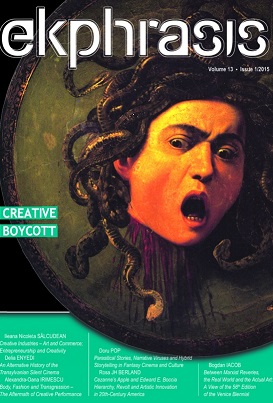Cezanne’s Apple and Edward E. Boccia Hierarchy, Revolt and Artistic Innovation in 20th-Century America
Cezanne’s Apple and Edward E. Boccia Hierarchy, Revolt and Artistic Innovation in 20th-Century America
Author(s): Rosa JH BerlandSubject(s): Fine Arts / Performing Arts
Published by: Universitatea Babeş-Bolyai, Facultatea de Teatru si Televiziune
Keywords: 20th-century American painting; abstraction; American art criticism; Avant garde; Max Beckmann; Edward E. Boccia; Arthur C. Danto; Expressionism; figural painting; Clement Greenberg; institutional outlook; opticality; modernism; Rosalind Krauss
Summary/Abstract: The reconstruction of the twenty-first-century imagination (ideologies that shape our “imagined world”) and aesthetic view through the “authentic” modes of abstraction, conceptualism, and the lens of media and digital technology has led to a new way of understanding and experiencing creativity. While these are certainly new or original critical experiences, there are other types of creativity, ideologies and imaginary worlds that are quite separate, and sometimes polemically opposed to this genre of making and looking. An example of this type of creative visualization and boycotting of the supposedly authentic gesture is the work of the late American artist Edward E. Boccia, who devoted much of his life to a series of panel paintings that take as their subject problems of politics and society, as well as religious experience in the twentieth century. Made between 1956 -2006, the large scale altarpieces represent the phenomenon of figural creativity produced in traditional studio mediums in mid- to late twentieth-century America. While the artist was active within a university community, where there would be a heightened awareness if not support of the contemporary rhetoric of formalist criticism and anti-illusionism, Boccia’s way of working was transgressive, going against the nationwide current of Abstraction, Minimalism and Conceptual art, art informe and later digitization. This study attempts to reposition his significance and move past a conscribed history of mid- to late twentieth-century American art that has often been guided by a somewhat reductive hierarchy in which abstraction and its progeny feature as the key accomplishments of American ingenuity.
Journal: Ekphrasis. Images, Cinema, Theory, Media
- Issue Year: 13/2015
- Issue No: 1
- Page Range: 118-141
- Page Count: 24

